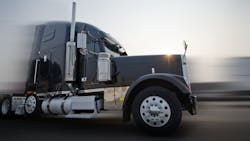I find it interesting that often when people talk about the trucking industry, they make it sound like one big monolithic entity. And that entity is a Class 8 long-haul sleeper tractor. The reality of trucking is quite different.
By our estimates there are more than 4 million Class 3, 4, and 5 vans and step vans operating in the U.S. and Canada. In addition, there are upwards of 385,000 Class 6 box trucks on the road. There are also about 800,000 Class 8 tractors in regional haul and about 1,200,000 long-haul Class 8 sleeper tractors on the road.
A pretty mixed bag.
Add to that the variability of the duty cycles of these vehicles. Some operate in urban environments, others in suburban locations, and still others out in the country. Some are in service in the flat Midwest, while others operate in the mountainous areas of the country. Some are on highways where they can cruise at 70 mph, while others are on secondary roads with speed limits of 35 mph or even 25. Some operate where temperatures are below freezing on a regular basis, while others operate in areas where high temperatures exceed 100 degrees Fahrenheit.
There are sleeper tractors and day cabs. There are conventional trucks and cabover engine designs.
Some drive 500 miles a day, others as few as 15. Some are operations with stops at multiple customer locations. Others drop off at only one location. Some operate round the clock, while others run one or two shifts a day.
Like I said, a mixed bag.
What’s the point of talking about these differences? It becomes important to be aware of these differences and distinctions when entering into discussions about the viability of electric vehicles. I am still hearing people dismiss EVs in trucking because of battery range limits and lack of a nationwide charging infrastructure, or because “they just won't work in long-haul applications.”
The truth is at this point EVs in long-haul don’t make a lot of sense given range and charging concerns. However, that does not mean fleets should not begin exploring the use of EVs in some of their other applications. We’ve seen proof that for certain market segments and in certain applications electric trucks make total sense. If a fleet participates in those market segments—vans and step vans, medium-duty box trucks, terminal tractors and heavy-duty regional tractors with short range needs—now is a good time to consider adding them to your equipment roster.
Since Run on Less—Electric, I have written and talked a fair amount about this. But I think it is important. If we are going to help trucking reduce its carbon footprint and improve its efficiency, we need to stop talking about—and stop others from talking about it—as if it were one homogenous entity.
While it seems like much of the talk in the general media centers on long-haul trucking, those of us in the industry need to make sure people understand all the various subsets of trucking—each of which contributes to goods getting delivered when and where they are needed.
Michael Roeth has worked in the commercial vehicle industry for nearly 30 years, most recently as executive director of the North American Council for Freight Efficiency. He serves on the second National Academy of Sciences Committee on Technologies and Approaches for Reducing the Fuel Consumption of Medium and Heavy-Duty Vehicles and has held various positions in engineering, quality, sales, and plant management with Navistar and Behr/Cummins.
About the Author

Michael Roeth
Executive Director
Michael Roeth is the executive director of the North American Council for Freight Efficiency. He serves on the second National Academy of Sciences Committee on Technologies and Approaches for Reducing the Fuel Consumption of Medium and Heavy-Duty Vehicles and has held various positions with Navistar and Behr/Cummins.
